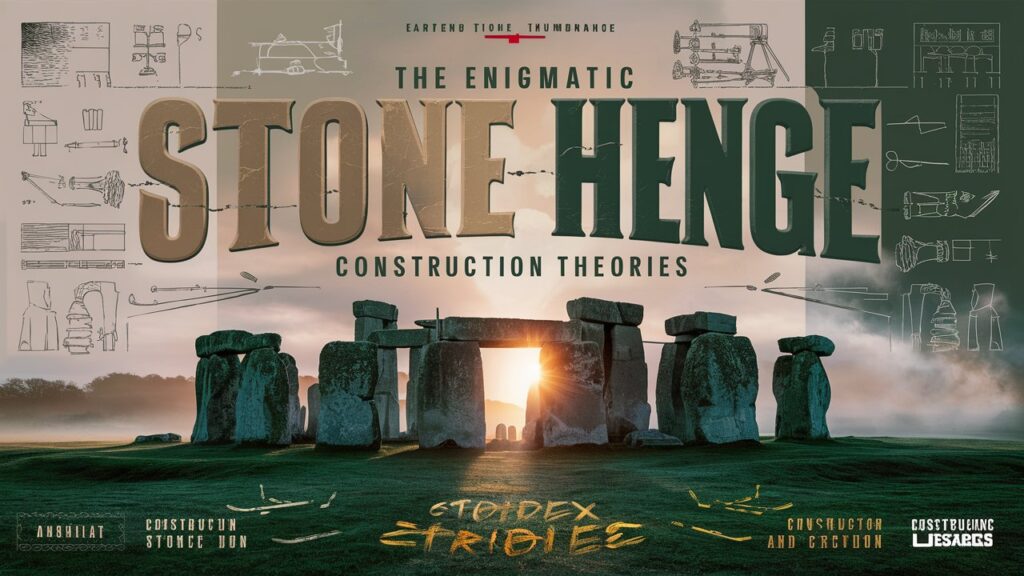The Enigmatic Stonehenge: Construction Theories

Stonehenge, the prehistoric monument located on the Salisbury Plain in Wiltshire, England, has fascinated archaeologists, historians, and visitors alike for centuries. Its enormous standing stones, arranged in a circular formation, are among the most recognizable and mysterious structures in the world. The question of how and why Stonehenge was built has given rise to numerous theories, ranging from practical explanations to more speculative ideas involving astronomical alignments, ancient engineering feats, and even extraterrestrial influence. Despite decades of research, many aspects of Stonehenge’s construction remain a mystery, making it an enduring symbol of human ingenuity, spirituality, and the unknown.
In this article, we will explore the main construction theories surrounding Stonehenge, shedding light on the various attempts to understand how this remarkable structure was created.
The Historical Context of Stonehenge
Before delving into the construction theories, it's important to understand the context of Stonehenge’s creation. The monument was built in stages, with the first phase beginning around 5,000 years ago during the late Neolithic period, and continued into the Bronze Age, around 3,500 years ago. The circular arrangement of massive stones, some weighing up to 25 tons, is thought to have been the work of different generations of people over centuries.
Archaeological evidence suggests that Stonehenge served multiple purposes over time, ranging from a ceremonial or religious site to a place of astronomical observation. However, the exact reasons for its construction and the techniques used to assemble it remain the subject of debate.
1. The "Primitive Engineering" Theory
One of the more straightforward theories about Stonehenge’s construction is that it was built using simple tools and basic engineering techniques. According to this theory, the builders relied on primitive yet effective methods to transport and position the stones. While the idea that such enormous stones could be moved by ancient peoples might seem implausible at first, some researchers believe that the builders may have used log rollers, sledges, and wooden cranes to move the stones across the landscape.
The large "bluestones" used in the inner circle of Stonehenge, some of which were sourced from the Preseli Hills in Wales (over 140 miles away), would have been transported using these rudimentary techniques. Recent studies have shown that the bluestones may have been dragged along the ground using sledges and wooden tracks, while the larger sarsen stones—measuring up to 30 feet in length—may have been transported using a system of rollers and ropes.
While this theory acknowledges the remarkable physical effort involved, it still assumes that the builders had knowledge of basic mechanics and were able to organize a large labor force to carry out such a task.
2. The Astronomical Alignment Theory
One of the most widely accepted theories regarding the purpose of Stonehenge involves its alignment with celestial events. Archaeologists and astronomers have noted that Stonehenge is aligned with the movements of the sun, particularly the summer and winter solstices. The monument’s entrance is oriented to the sunrise on the summer solstice, and the stones align with the setting sun on the winter solstice.
This theory suggests that the construction of Stonehenge was driven by a desire to track celestial cycles. The arrangement of the stones may have served as an ancient astronomical observatory, allowing people to mark important events like solstices and equinoxes. Some believe that Stonehenge may have been used as a calendar system to help early agricultural societies plan planting and harvesting, based on the alignment with the sun’s position.
The precision with which the stones are arranged and the degree of alignment with celestial events points to a sophisticated understanding of astronomy among the ancient builders. This theory also suggests that Stonehenge may have had a ceremonial or religious significance, with the sun worshiping or marking the passage of time playing key roles in the site's rituals.
3. The Transportation and Human Labor Theory
Another theory focuses on the logistics of moving the massive stones. Given the size of the stones and the distances they were transported, it is often questioned how such large materials could have been moved without modern machinery. Some theorists suggest that the builders of Stonehenge used vast numbers of laborers to transport and erect the stones.
One prominent idea is that a large workforce, possibly hundreds or even thousands of people, was employed to drag and position the stones using simple tools. Ropes, rollers, and even manpower may have been used in combination with levers and pulleys to help position the stones upright. This theory emphasizes the collective effort required to build the site and suggests that Stonehenge was a monumental project that required significant social organization.
This theory also underscores the role of community and ritual in the construction process. It is possible that the building of Stonehenge served as a communal activity that united different tribes or groups in a shared spiritual or cultural endeavor. The sheer scale of the project would have required significant organization, leadership, and cooperation.
4. The "Aliens or Ancient Lost Civilization" Theory
Perhaps the most fantastical of all the Stonehenge construction theories is the idea that extraterrestrial beings or an advanced ancient civilization were responsible for the construction of the monument. This theory suggests that the ancient builders could not have possessed the knowledge, tools, or manpower to complete such a sophisticated structure without outside assistance.
Proponents of this theory often point to the mystery of how the large stones, particularly the bluestones, were transported over such great distances. Some claim that the precision and alignment of the stones with astronomical events indicate knowledge far beyond what could be expected from a Neolithic society. In this view, ancient aliens or a technologically advanced civilization—perhaps even lost to time—must have provided the necessary guidance or technology to build Stonehenge.
While this theory is largely discredited by mainstream archaeologists and historians, it has gained popularity in popular culture, especially in television documentaries, books, and movies. However, there is no credible scientific evidence to support the idea of extraterrestrial involvement or an advanced ancient civilization that predated known history.
5. The Ritualistic and Religious Purpose Theory
Another well-supported theory proposes that Stonehenge was built for religious or ceremonial purposes. Archaeological evidence suggests that Stonehenge was a site of significant ritual activity. The arrangement of the stones, as well as the presence of burial mounds and human remains, suggests that the site may have been used for ancestor worship, rituals, and ceremonies related to death and the afterlife.
The alignment with the sun could have had symbolic importance, representing the cycle of life, death, and rebirth. The construction of such a massive and complex structure could have served as a demonstration of power and unity, with the builders’ faith and spiritual beliefs central to their efforts. The religious purpose theory also ties into the idea that Stonehenge was a place for pilgrimage, where people came from far and wide to participate in ceremonies or seek spiritual enlightenment.
Conclusion: A Monument to Mystery and Human Achievement
Despite many theories about its construction, Stonehenge remains an enigmatic symbol of ancient human achievement. Whether it was built as an astronomical observatory, a religious site, or a ceremonial monument, its purpose and the methods of its construction continue to captivate our imagination. While we may never know the full truth behind Stonehenge, the many theories and research efforts have provided us with insights into the ingenuity, resourcefulness, and spiritual life of the people who built it.
Stonehenge stands not just as a puzzle to be solved, but as a lasting testament to the creativity and determination of ancient societies. Its mystery endures, inviting curiosity and exploration for generations to come.



Post Comment